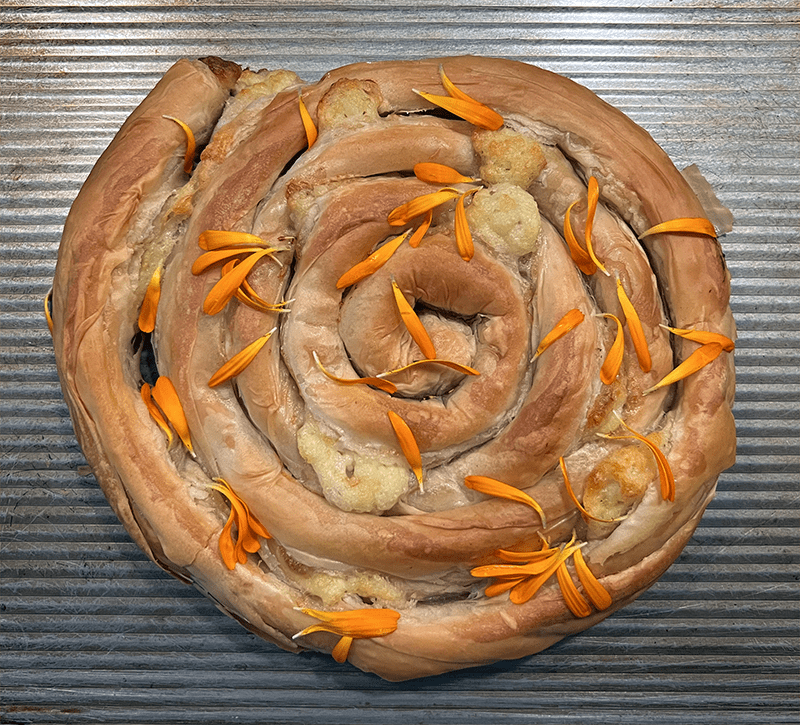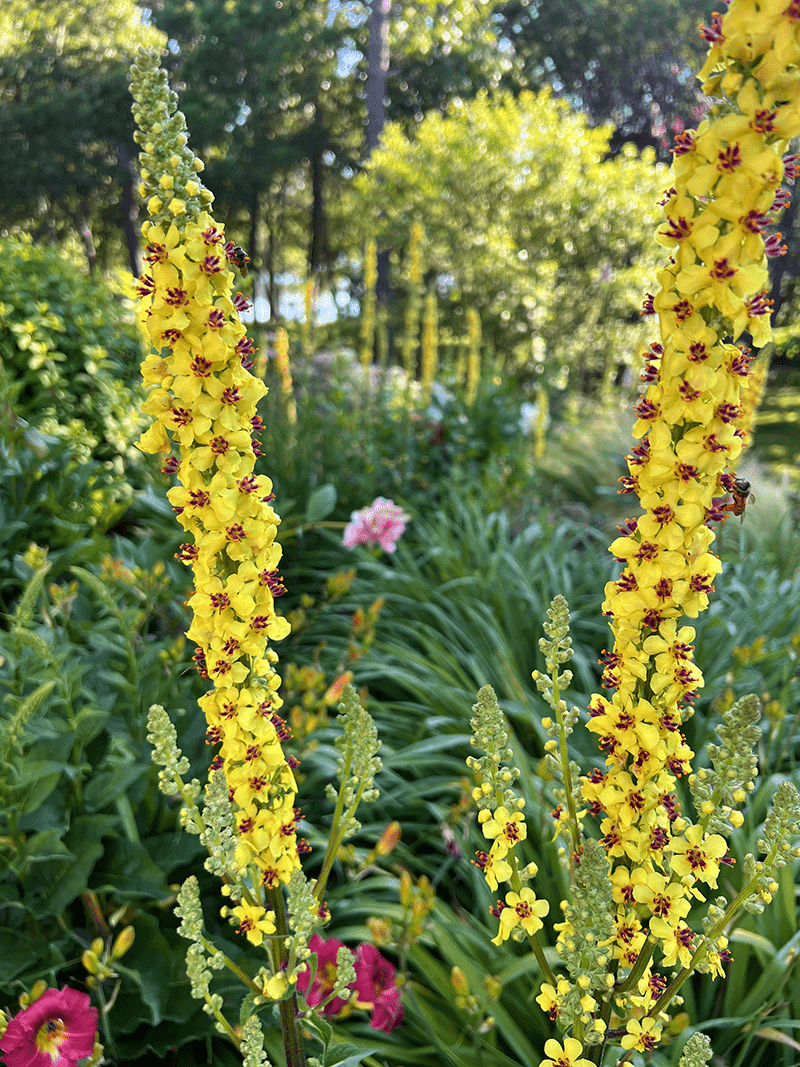Edible Flower Petals, Tap Roots and Crop Rotation
C.L. and Ellen have suggestions for edible flower petals, whether you want to use them for visual or taste appeal. Hear a discussion about taproots – what are they and what they mean for you – and hear if you need to be concerned about crop rotation.
This episode is being brought to you by our friends at Dramm: rainwand.com
:38 What’s For Dinner: Flowers petals!
5:53 Eat/Drink/Grow: Taproots.
20:18 Love Letters and Questions: Amanda asks: “Can you recommend any books or reliable resources for crop rotation?

Ellen may disagree, but C.L. thinks that Calendula flowers are worth growing for visual appeal on food alone. This is a cheese spiral, purchased from Trader Joe’s, that was made much more festive and appealing with the simple addition of Calendula petals.

Many drought-tolerant plants have taproots, so that they can “tap into” the moisture below. This Verbascum chaixii is just one example of a drought-tolerant plant with a tap root.

When plants with taproots are small, they are actually pretty easy to pull out of the ground. When they grow larger, it’s more difficult. This was a young Verbascum that was growing in the wrong place, but was easily pulled from the garden by hand.

You mentioned your dislike of mosquitoes .what plants could be planted to discourage or repel them ?
Hi Barbara, Does anyone like mosquitoes?! I don’t think any plants discourage or repel mosquitos. I’ve heard people say that scented geraniums work or lemon grass, but I disagree. Then again, I’m one of those people who is a mosquito magnet. If you’re sitting next to me, you won’t have to worry…they’ll be biting me, not you! (And this is Ellen, btw. I know it says C.L., but we share the account.)